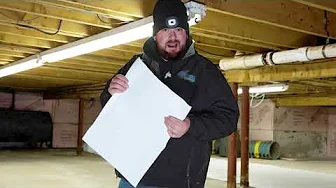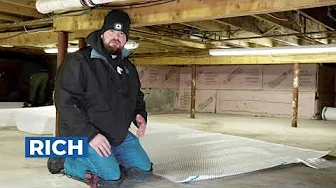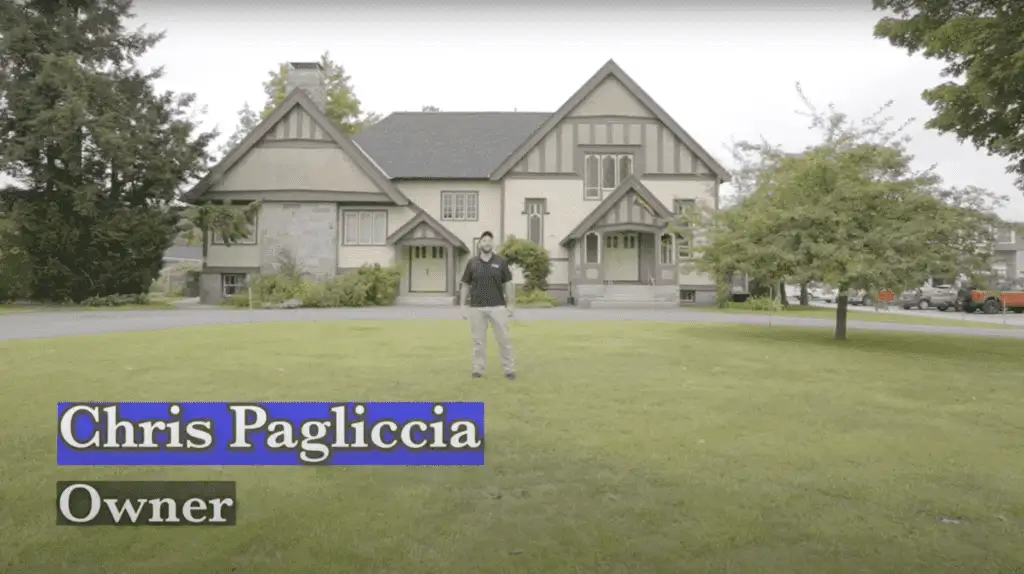Foundation Crack Repair Kittery ME
Foundation cracks are one of the most common issues homeowners face, especially in areas with shifting soil, heavy rainfall, or fluctuating temperatures. In Kittery, ME, these cracks can jeopardize the integrity of your home, allowing water to seep in, leading to structural problems and potential mold growth. Addressing these cracks early is critical to maintaining the stability and value of your property.
Real People - Real Great Results
Crawl Space Video Playlist
Common Causes of Foundation Cracks
Foundation cracks don’t appear out of nowhere—they’re often the result of underlying forces at work. Here’s what usually causes them:
- Soil Movement: The ground beneath your home never truly rests. In Kittery, ME, where seasonal shifts can be especially pronounced, expansive soils tend to swell with moisture and shrink when dry. This relentless cycle exerts pressure on your foundation, eventually leading to cracks. Over time, even slight shifts in the soil can add up to significant damage.
- Water Damage: Water doesn’t just flow—it creeps, pools, and undermines your foundation. Whether it’s heavy rain or improper drainage, poor water management around your property can saturate the soil and destabilize the ground supporting your home. Guess what happens next? Your foundation bears the brunt, and cracks form.
- Temperature Changes: From freezing winters to thawing springs, Kittery homeowners know how punishing the seasons can be. Freeze-thaw cycles expand and contract your foundation materials like a balloon repeatedly blowing up and deflating. Over time, that stress manifests visibly as cracks—some small, some not.
- Construction Issues: Not all cracks happen after years of wear and tear. Sometimes, the weakness starts from day one. Rushed or sloppy construction practices, like pouring concrete without letting it cure properly, can leave your foundation predisposed to cracking well before external factors come into play.
Every crack has a story, and its origin dictates the repair strategy. Pinning down the cause early can save you from choosing the wrong fix and watching the problem flare up all over again.
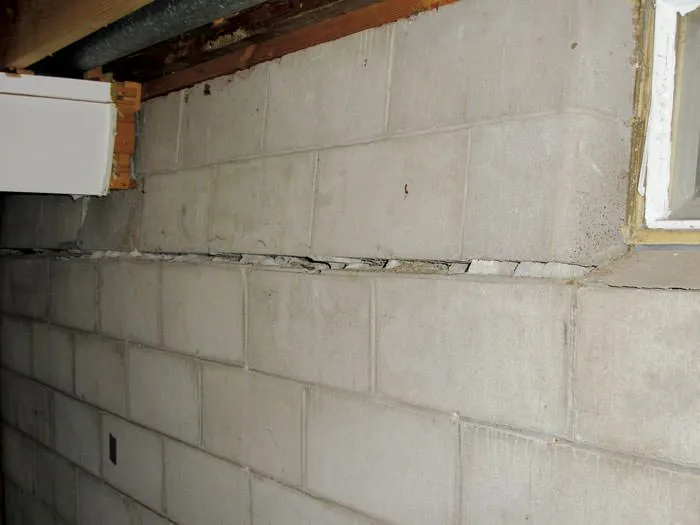
Types of Foundation Cracks
Not all cracks are created equal. Some are harmless while others might be the architectural equivalent of a red flag. Knowing the difference can save you a lot of headaches—and money. Here are the most common types of foundation cracks and what they mean:
- Hairline Cracks: The shallowest of the bunch, these are thin, surface-level cracks that often appear in newly poured concrete as it cures. On their own, they’re usually not a big deal—think of them as the wrinkles of a foundation aging gracefully. However, ignore them at your own peril; hairline cracks can sometimes hint at broader issues lurking beneath.
- Vertical Cracks: These are the least alarming and usually caused by good ol’ soil settling as your house gets cozy in its environment. Left untreated, though, they might still invite unwanted guests like water or insects. A simple sealant often solves the problem, but keep an eye out for any signs of growth.
- Horizontal Cracks: This is where things get serious. Horizontal cracks are typically a sign of excessive lateral pressure, often from expanding soil or poor drainage around the property. These cracks can compromise the structural integrity of the foundation and demand immediate professional intervention. Translation: don’t sit on it.
- Diagonal Cracks: Usually spotted running at an angle from corners of windows, doors, or other openings, diagonal cracks are the lovechild of uneven settling and environmental stressors. While not as potentially catastrophic as horizontal cracks, they still indicate that something is shifting—and not in a good way.
Spotting and decoding these cracks is the first step in determining whether you’re dealing with a cosmetic concern or a structural emergency. When in doubt, always lean toward professional evaluation. Your foundation is quite literally the backbone of your home—don’t gamble with it.
Risks of Ignoring Foundation Cracks
Foundation cracks don’t just sit there quietly waiting for your attention—they grow, creep, and invite trouble. Ignoring them is essentially rolling out the red carpet for a cascade of issues that can snowball quicker than you might think. Here’s what can happen when you look the other way:
- Water Intrusion: That hairline crack? It’s an open invitation for water. Once inside, water doesn’t just settle politely; it seeps into walls, floods basements, and fosters the perfect conditions for mold and mildew to flourish. What starts as a damp patch quickly evolves into an expensive remediation project.
- Structural Instability: A crack might seem minor at first glance, but don’t be fooled—it’s a warning sign your foundation is under stress. Over time, the stress escalates, spreading damage to your walls, floors, and even your roofline. Suddenly, you’re not just dealing with a crack, but sagging floors or doors that swing open like haunted house props.
- Increased Repair Costs: Procrastination here is pricey. A small vertical crack that might cost a few hundred dollars to fix can spiral into major repairs involving underpinning or carbon fiber reinforcement. In simple terms? The longer you wait, the harder it hits your wallet.
- Pest Infestation: Cracks aren’t just weaknesses in your foundation—they’re doorways for pests. Ants, termites, and other unwelcome guests see your cracked foundation as prime real estate, and once they’re in, it’s a whole new layer of problems (and expenses).
Ignoring foundation cracks doesn’t just gamble with your home’s safety—it’s a surefire way to turn a manageable problem into a full-blown crisis. Tackle the issue early to protect your investment, your sanity, and quite possibly, your floors.
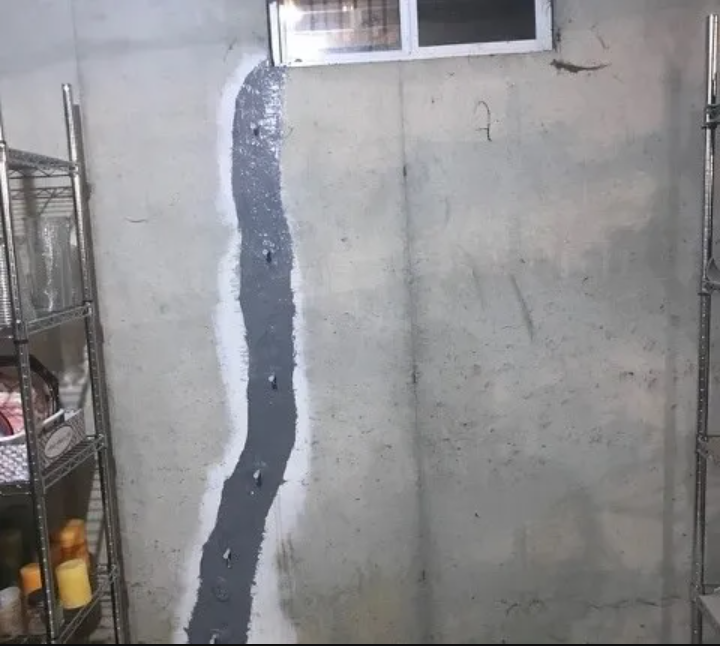
DIY Foundation Crack Repairs: What to Know
Not every crack is a panic button, and tackling smaller, non-structural issues on your own can save you both money and time. But, let’s be clear: DIY isn’t code for “go in blind.” A slapdash attempt can lead to more harm than good, so if you’re going to do it yourself, you’ve got to do it right.
- Clean the Crack: Start with the basics—grab a wire brush, vacuum, or compressed air to clear out dirt, loose concrete, or debris. A clean slate ensures the repair material bonds properly, which is key if you’re looking for a solution that won’t bail on you at the first sign of stress.
- Pick the Right Material: You’ve got two reliable options here: epoxy and polyurethane. Epoxy is the stronger of the two—a rock-solid choice for structural integrity. Polyurethane, on the other hand, is more flexible and excels at keeping water out. For minor cracks, polyurethane is often the better bet—think of it as a solid bandaid, while epoxy is surgical-grade stitching.
- Seal It Up: With your material chosen, use a caulk gun or injection kit to fill the crack. Work slowly but deliberately—this isn’t about speed. Push the material deep into the crevice, ensuring full coverage. Overfilling slightly is better than underdoing it; you can always sand it down once it cures.
- Monitor Like a Hawk: Here’s the thing about foundation cracks: they sometimes have a habit of coming back. Once the repair is complete, check it periodically—monthly, quarterly—whatever works for your level of vigilance. If the crack widens, leaks, or reopens, it’s time to call in a pro. Don’t play chicken with structural integrity.
DIY repairs are perfectly fine for minor cosmetic or sealing jobs, but know your limits. The moment you see wider cracks, unusual patterns like stair-steps, or worsening issues elsewhere in your home, it’s no longer a weekend warrior project. That’s when you get the pros on the phone.
Professional Repair Methods for Foundation Cracks
When it comes to foundation crack repair, not all fixes are created equal. Professional repair methods are designed to address the specific type and cause of each crack, ensuring a durable and effective solution that DIY techniques often can’t match. Here’s a breakdown of the most common approaches:
- Epoxy Injections: Think of epoxy as the superglue of the foundation repair world. This method is used for structural cracks—those that compromise the strength of your home. After cleaning out the crack, epoxy resin is injected under pressure to bond the gap and restore the integrity of the concrete. While robust, this approach works best when underlying causes like soil movement are addressed alongside the repair.
- Polyurethane Foam Injections: Unlike epoxy, polyurethane foam is more about flexibility and water resistance. Ideal for non-structural cracks, this material can expand to fill irregular voids, creating a seal that keeps water out while accommodating slight foundation movement. It’s the go-to choice for preventing leaks in wetter environments like Kittery, ME.
- Carbon Fiber Reinforcement: Horizontal cracks or those caused by bowing walls signal significant stress on the foundation. In these cases, carbon fiber straps are applied to reinforce and stabilize the walls. Lightweight yet incredibly strong, carbon fiber works as an unobtrusive solution that stops further damage without requiring major structural overhaul.
- Underpinning: When settling or shifting soil causes foundation cracks, the problem lies deeper than what you can see on the surface. Underpinning involves adding extra support below the foundation, either by driving steel piers or using other stabilizing methods to transfer the structural load to more stable soil or bedrock. It’s a big fix for a big problem, but one that ensures your home stays level and secure.
- Drainage Improvements: Sometimes, the crack is a symptom, and water is the real culprit. In these cases, repairs might include regrading the land around the foundation or installing drainage solutions like French drains or sump pumps. By keeping water away from your home, you not only fix current issues but also prevent future ones.
Every method comes down to identifying the root cause and tailoring the fix to meet the specific challenge. Professional repairs aren’t just about patching cracks—they address the bigger picture, ensuring your foundation can handle what’s thrown at it for years to come. It’s a job best left to the pros.
How To Prevent Future Foundation Cracks
Let’s be real: you can’t fight gravity, geology, or weather, but you can stack the odds in your favor. Keeping foundation cracks at bay boils down to reducing stress—on your foundation, not your sanity. Here’s how you stay ahead of the game:
- Master Your Drainage Game: Water is your foundation’s worst enemy. Ensure gutters and downspouts push rainwater far from your home’s base. Landscape sloping (called grading) should direct runoff away from the foundation, not toward it. Picture your home like a fortress—dry moats only.
- Invest in a Sump Pump: Excess water turns soil into a soft mess, putting pressure on your foundation. A sump pump keeps water under control, especially during heavy rains or spring thaws. If you live in an area prone to flooding or high water tables, consider this your home’s lifeline.
- Manage Soil Moisture: Extremes are bad for soil. Parched earth contracts like an overstressed rubber band, while oversaturated soil swells and pushes against your foundation. Aim for a happy medium—water during dry spells but don’t create your own swamp.
- Regular Inspections: Early Warning Systems Save Money: Walk around your home a few times a year and check for signs of trouble—tiny cracks, water pooling near the foundation, or shifting soil. Bringing in a professional once in a while for a more thorough look can stop a small issue from snowballing.
- Think Before You Plant: Trees and shrubs are great for curb appeal, but their roots aren’t your foundation’s friends. Keep landscaping with aggressive root systems far enough away to avoid roots creeping under your foundation and causing shifts or cracking.
Proactivity pays off. A bit of time now to manage water, soil, and landscaping can save you from major headaches (and drain your bank account less) in the long haul. Call it an ounce of prevention for your home’s most important support system.
When To Call a Professional for Foundation Crack Repairs
Certain foundation cracks simply aren’t a “patch it and forget it” kind of job. If you’ve noticed cracks widening like they’ve got somewhere to be, or appearing in more alarming formations—horizontal lines or step-like patterns crawling up the corners of your walls—it’s time to stop Googling DIY solutions and call in a pro. These aren’t just cosmetic blemishes; they’re structural red flags.
Keep an eye out for other whispers of deeper trouble, too. Are your doors dragging or refusing to latch properly? Does one side of your floor feel like a ski slope? Sagging ceilings or warped windows could also be tied to foundation issues. And don’t ignore water trickling in where it shouldn’t. Persistent leaks or damp areas near cracks may point to drainage failures, which only exacerbate the underlying problem.
Here’s the bottom line: foundation work isn’t just about patching what you can see—it’s about diagnosing what you can’t. Professionals have the tools and expertise to figure out what’s really going on, ensuring not just a fix, but a solution. In short, when the signs start stacking up, don’t hesitate. Call in the experts, and let them stabilize your home from the ground up.

Conclusion
Foundation crack repair in Kittery, ME, is more than just patching up a few unsightly lines; it’s about safeguarding the core of your home. A stable foundation isn’t something you can afford to gamble with—ignoring cracks or opting for quick, temporary fixes can snowball into bigger problems down the road. From water intrusion to structural instability, the risks of inaction far outweigh the costs of early intervention.
By knowing what causes these cracks, recognizing their types, and understanding both DIY and professional solutions, you’re equipped to make decisions that really matter. Take action when you see the first signs of trouble. Whether it’s a hairline issue you can handle yourself or a horizontal crack screaming for expert hands, prioritizing repairs now will save you time, stress, and money in the long game.
In the end, it’s simple: your home’s foundation literally bears the weight of the life inside it. Treat it with the attention it deserves, and you’ll be rewarded with a safer, stronger home that stands the test of time. In Kittery’s unpredictable climate, this is one investment that’s always worth making.
Reviews from Happy Customers
Our top priority is customer satisfaction, and we work closely with clients to understand their unique needs and goals.




